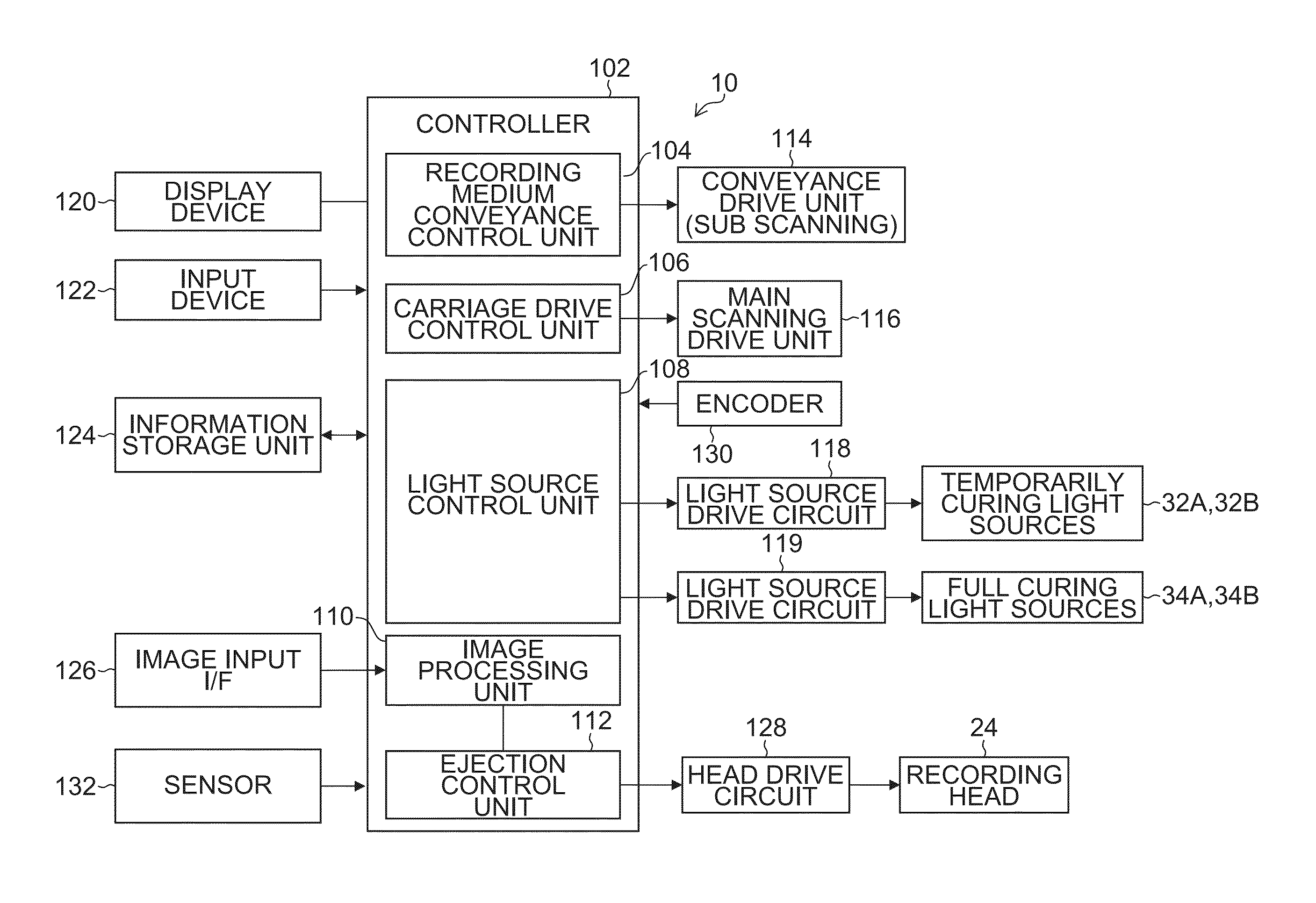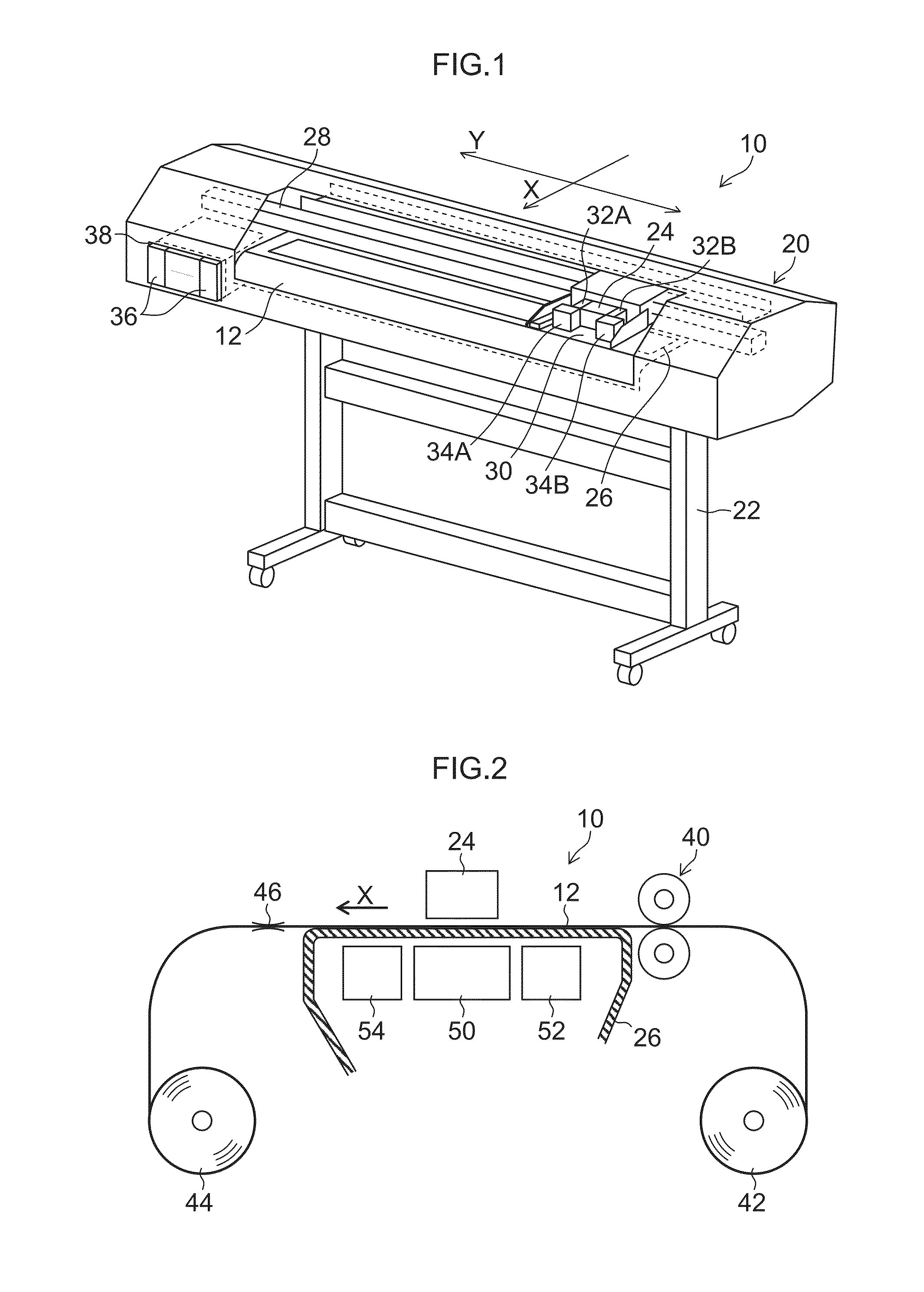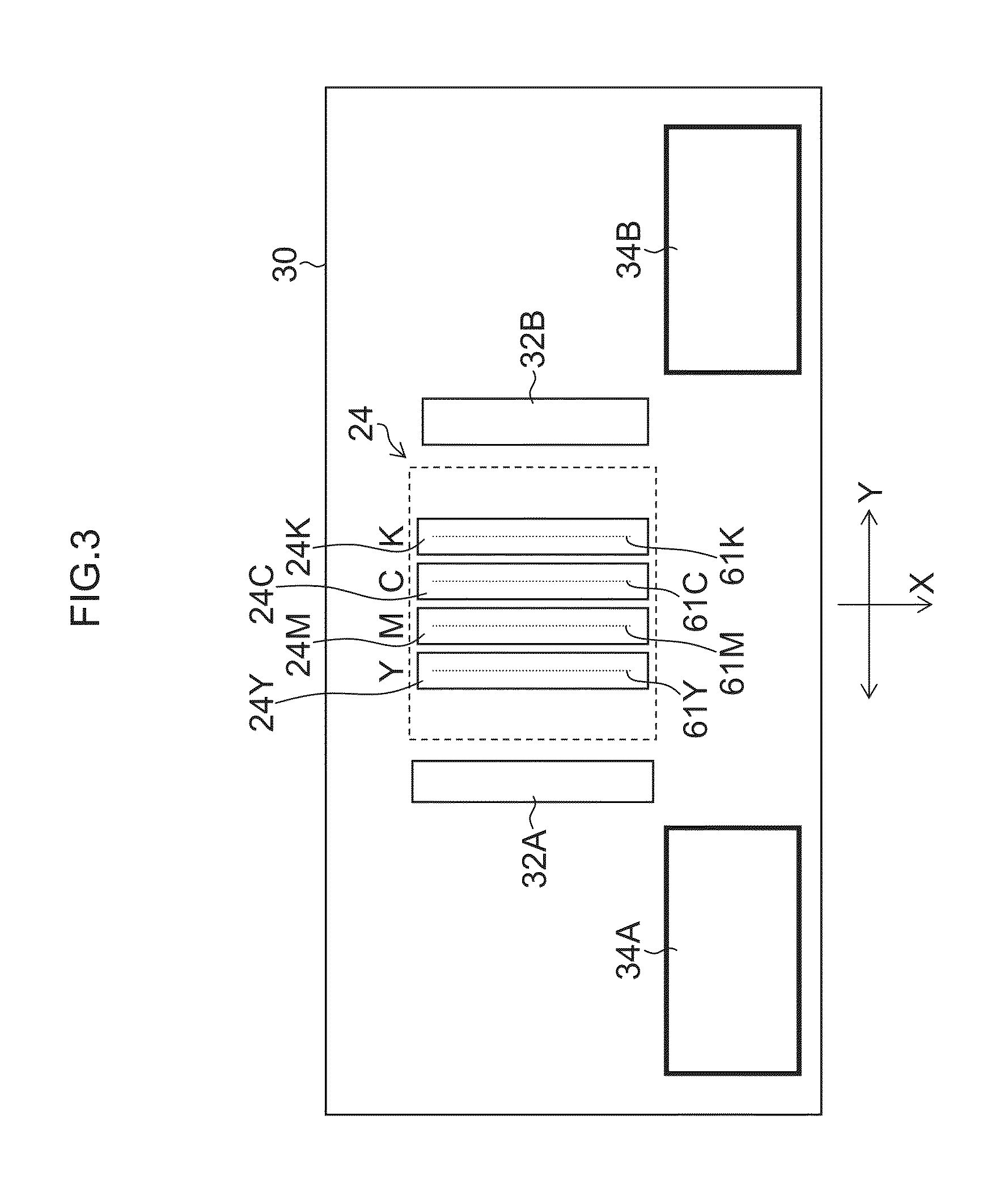Image processing device, method and inkjet recording device
a technology of image processing and inkjet printing, which is applied in the field of image processing devices, methods, and inkjet recording devices, can solve the problems of inability to control the ejection of the nozzle by the method, the need for excessive scanning, and the inability to reduce the productivity of the method, so as to achieve the effect of suppressing density irregularities such as banding and reducing productivity
- Summary
- Abstract
- Description
- Claims
- Application Information
AI Technical Summary
Benefits of technology
Problems solved by technology
Method used
Image
Examples
fourth example
[0512]The fourth example is a form of coping with the mask shifting processing for the example described in the first example. FIG. 46 is a flowchart illustrating the fourth example of the processing of generating the first dither mask 350. In FIG. 46, the same step numbers are attached to the processes same as or similar to that in the flowchart described in FIG. 16, and the description is omitted.
[0513]In FIG. 46, instead of step S14 in FIG. 16, a process of step S14A is adopted, and a process of step S15 is added further. Also, in FIG. 46, instead of the individual processes of steps S18, S20 and S24 in FIG. 16, processes of steps S18A, S20A and S24A are adopted.
[0514]In step S14A in FIG. 46, according to the scanning pattern and the shift setting condition of the dither mask, the nozzle numbers corresponding to the individual pixels of the dither mask are calculated at individual main scanning positions of the dither mask. Provided that, “individual main scanning positions” here...
fifth example
[0524]The fifth example is a form of coping with the mask shifting processing for the example described in the second example.
[0525]The first dither mask generation method relating to the fifth example is achieved by a combination of the flowchart illustrated in FIG. 46 and the flowchart of the second example described in FIG. 29.
[0526]However, in step S106 of FIG. 29, the low-pass dot arrangement image is updated in the state of shifting the dot arrangement by the mask shift amount and arranging it. Since content of the other processes is already described, the description is omitted.
[0527]As described using FIG. 38 to FIG. 47, even in the case that the dither mask is shifted in the sub scanning direction and arranged, and there are the plurality of nozzle numbers corresponding to the individual pixels of the dither mask, the first dither mask can be generated using the average nozzle ejection rate.
[0528]Without being limited to the case of shifting and arranging the dither mask, i...
sixth example
[0533]For a halftone processing technique described in the present embodiment, one of features is a point that it separates “generating the dither mask with excellent graininess for the non-uniform input value reflecting the nozzle ejection rate, that is, in the state of the non-uniform dot density” and “controlling the nozzle ejection rate by the input value”.
[0534]Thus, as described in FIG. 38 to FIG. 47, even in the case that the dither mask is shifted and arranged or the like and there are the plurality of nozzle numbers for the individual pixels of the dither mask, banding can be suppressed while making the graininess be excellent to some extent.
[0535]Also, even in the case of sharing one dither mask in a plurality of print modes, for example, for the scanning patterns of different resolutions, dot kinds and relation between the individual pixels and the nozzle numbers due to memory limitation or the like, the average ejection rate pattern is reflected on the dither mask, the o...
PUM
 Login to View More
Login to View More Abstract
Description
Claims
Application Information
 Login to View More
Login to View More - R&D
- Intellectual Property
- Life Sciences
- Materials
- Tech Scout
- Unparalleled Data Quality
- Higher Quality Content
- 60% Fewer Hallucinations
Browse by: Latest US Patents, China's latest patents, Technical Efficacy Thesaurus, Application Domain, Technology Topic, Popular Technical Reports.
© 2025 PatSnap. All rights reserved.Legal|Privacy policy|Modern Slavery Act Transparency Statement|Sitemap|About US| Contact US: help@patsnap.com



